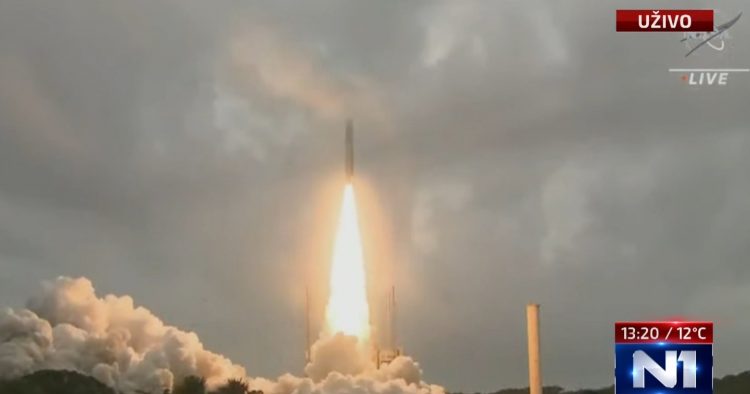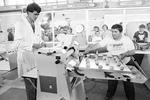
It's a moment that has been decades in the making. The James Webb Space Telescope, NASA's premier space observatory of the next decade, successfully launched on Christmas morning.
Oglas
The telescope lifted off atop an Ariane 5 rocket from Europe's Spaceport in French Guiana at 7:20 a.m. ET.
"We have LIFTOFF of the @NASAWebb Space Telescope!" NASA shared on Twitter. "At 7:20am ET (12:20 UTC), the beginning of a new, exciting decade of science climbed to the sky. Webb's mission to #UnfoldTheUniverse will change our understanding of space as we know it."
The Webb telescope has endured years of delays, including a combination of factors brought on by the pandemic and technical challenges. But the world's most powerful and complex space observatory will answer questions about our solar system, study exoplanets in new ways and look deeper into the universe than we've ever been able to.
The European Space Agency aptly referred to it as "an awesome Christmas present" for the international launch teams, as well as the whole of space science, on Twitter.
NASA Administrator Bill Nelson shared his gratitude for the international teams that made the mission and the Christmas Day launch possible.
"This is a great day for planet Earth," Nelson said shortly after the launch. "Thanks to the team. You all have just been incredible. Over three decades, you produced this telescope that is now going to take us back to the very beginnings of the universe. We are going to discover incredible things that we never imagined."
Webb will peer into the very atmospheres of exoplanets, some of which are potentially habitable, and it could uncover clues in the ongoing search for life outside of Earth.
The telescope comes equipped with a mirror that can extend 21 feet and 4 inches (6.5 meters) -- a massive length that will allow the mirror to collect more light from the objects it observes once the telescope is in space. The more light the mirror can collect, the more details the telescope can observe.
The mirror includes 18 hexagonal gold-coated segments, each 4.3 feet (1.32 meters) in diameter.
It's the largest mirror NASA has ever built, the agency said, but its size created a unique problem. The mirror was so large that it couldn't fit inside a rocket. So the NASA team designed the telescope as a series of moving parts that can fold origami-style and fit inside a 16-foot (5-meter) space for launch.
Webb will act as an infrared detective, detecting light that is invisible to us and revealing otherwise hidden regions of space, according to NASA.
Kakvo je tvoje mišljenje o ovome?
Učestvuj u diskusiji ili pročitaj komentare
Oglas
Kakvo je tvoje mišljenje o ovome?
Učestvuj u diskusiji ili pročitaj komentare
Oglas
NAJČITANIJE
Oglas
Oglas
Najnovije
Oglas
Oglas





 Srbija
Srbija
 Hrvatska
Hrvatska
 Slovenija
Slovenija

























































